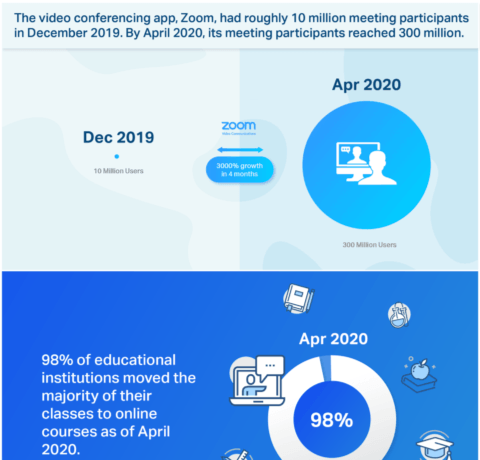Past, Present and Future of Online Education Infographic
The evolution of technology and of new learning experiences have always been closely related. As distance learning specialists affirm, the field of distance-learning had three main generations:
- Correspondence study
- Multimedia
- Computer-mediated
The Past, Present and Future of Online Education Infographic provides a brief presentation of the history of online education.
A brief timeline of online education
- On March 20, 1728, the Boston Gazette ran an advertisement offering long distance instruction. And so teaching outside the classroom had its beginning.
- 1728: Boston teacher offers instruction through weekly letters to anyone in the country.
- 1892: U. of Chicago is first educational institution to offer correspondence courses.
- 1922: Penn State broadcasts courses over the radio.
- 1953: U. of Houston offers course work on TV.
- 1968: Stanford University creates the Stanford Instructional Television Network.
- 1959: Plato is born, the first internet community. Hatched by two U. of Illinois profs.
- 1968: U. of Alberta (Canada) Dept. of Medicine offers online courses.
- 1984: The Electronic University Network, offers online courses using proprietary software for DOS and Commodore 64 computers.
- 1989: Phoenix rising. The University of Phoenix starts its online program.
- 1996: Duke University begins its Global Executive M.B.A. program which combines online technology and sessions on-campus and at various locations throughout Europe, Asia, and Latin America.
- 1999: Jones University becomes first accredited fully web based university; Learning portals, including HungryMinds, Click2Learn, Learn2, eCollege, Blackboard, and others emerge on the landscape.
- 2000: CourseNotes.com launches with dozens of classes at the University of Texas. The service provides professor web sites, including online course documents, calendars, grades, quizzes and surveys.
- Jan. 1, 2008: The term MOOC is coined by Dave Cormier of the University of Prince Edward Island.
- 2013: The Open University builds its own MOOC platform, Futurelearn, with universities from the UK. More MOOCs: Open2Study in Australia and Iversity in Germany.
3 Types of Online Education
- 80-100% online courses have no face to face interaction with teacher
- 30-80% course delivered online: Traditional courses using web facilitated courses
- Blended or hybrid: Up to 20 percent of content delivered online: otherwise, traditional face to face classroom learning
10 Surprising Facts about Online Students
- 46% of students say their biggest motivation for enrolling in an online course was to advance their current career.
- 37% of online students were the first in their family to attend college.
- 33% of people taking some online course are studying business.
- University of Phoenix has the largest proportion of online students at 15%.
- 39% of online students fall between the ages of 18 to 29.
- 21% of online students pay for their education using personal funds only.
- 70% of virtual learners are female.
- 29% of online graduates earn $85-150k annual income.
- 60% of students taking an online course are employed full-time.
- 37% of online students indicate that they enrolled because of the accelerated courses, which fast-tracks students to a degree.
Top 10 most popular online degrees
- Business Administration/management
- Accounting
- IT (Information Technology)
- Criminal Justice/Law Enforcement
- Finance
- Psychology
- Graphic Design
- Health Care Administration
- Nursing
- Computer Science
K-12 Online
- 25 states have state virtual schools operating in 2013-2014.
- 29 states and Washington, DC have statewide full-time online schools operating in 2013-14.
There were an estimated 1,816,400 enrollments in distance-education courses in K-12 school districts in 2009-2010, almost all of which were online courses. 74% of these enrollments were in high schools. Online courses with the highest level of enrollment fall under the categories of credit recovery (62%), dual enrollment (47%), and advanced placement (29%).







You can adjust your cookie preferences here.